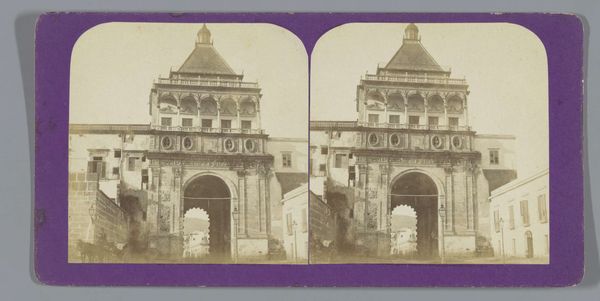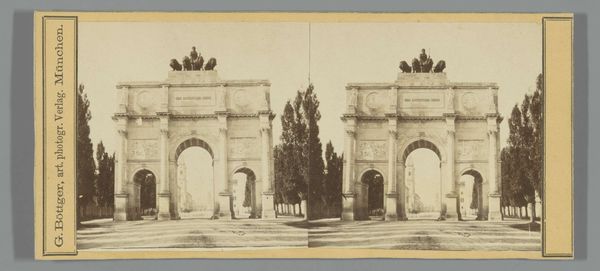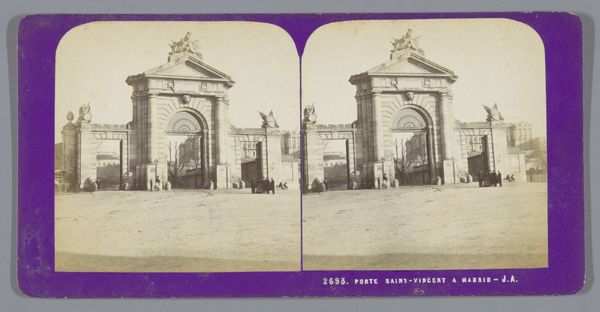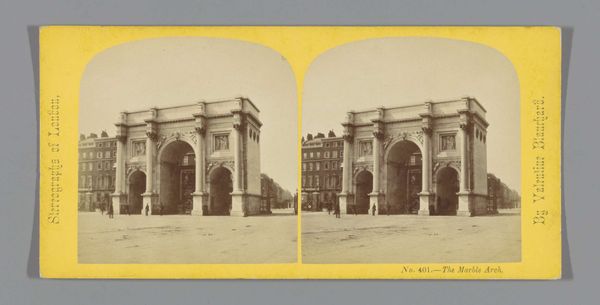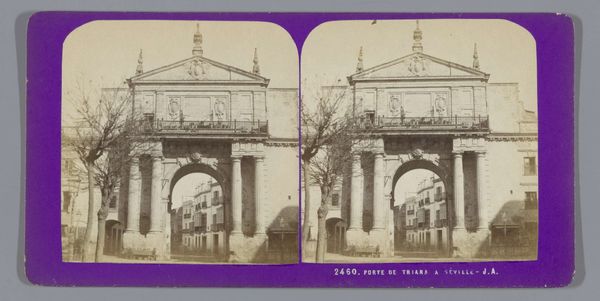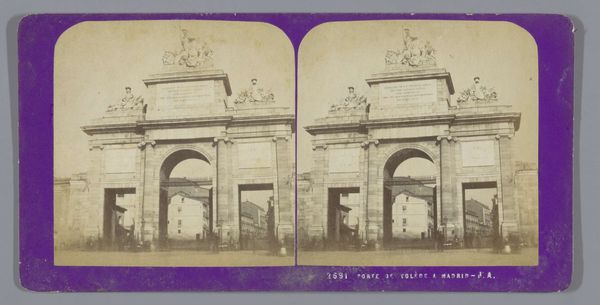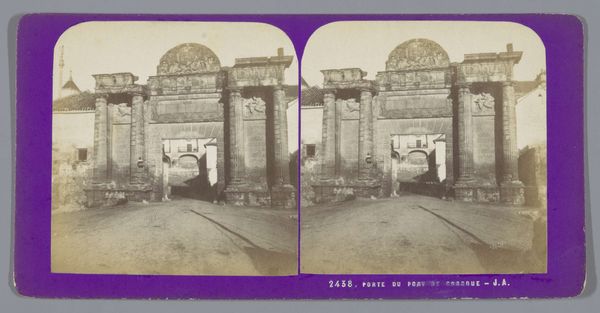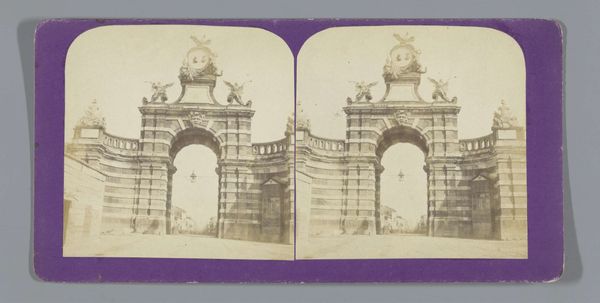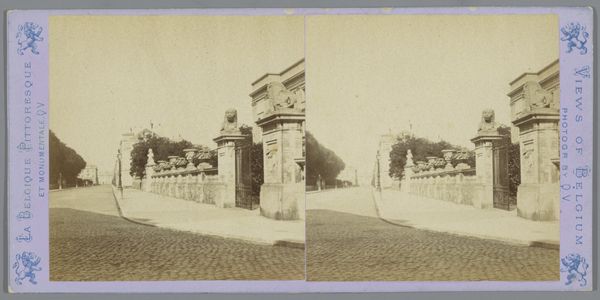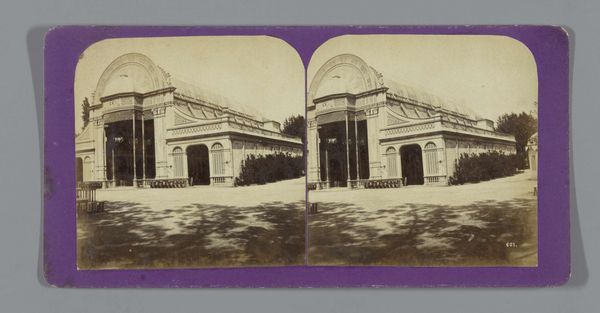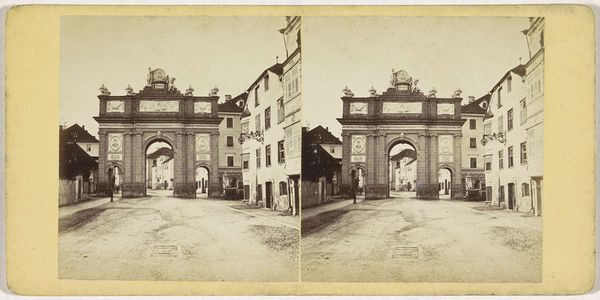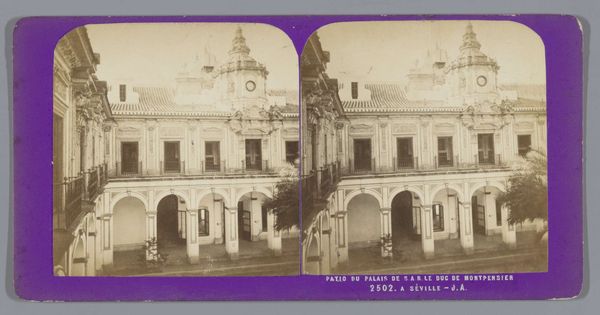
print, photography
# print
#
photography
#
cityscape
#
realism
#
building
Dimensions: height 85 mm, width 170 mm
Copyright: Rijks Museum: Open Domain
This stereoscopic photograph of the Puerta de Alcalá in Madrid was made by Jean Andrieu sometime in the mid-19th century. Stereoscopic photographs like these gained widespread popularity because they could be mass-produced. The emergence of photography highlights the shift in artistic practice, from unique handmade objects to reproducible images. It’s an industrial, chemical process, with a high degree of precision and control. The albumen print we see here would have involved coating paper with albumen from egg whites, then sensitizing it with silver nitrate. This process would have been labor-intensive, involving a network of suppliers and distributors. The result is a meticulously detailed image that captures the architectural grandeur of the monument. The use of this technique represents the intersection of art, science, and commerce that characterized the Industrial Revolution. It underscores how the changing modes of production influenced the way we perceive and document the world around us, blurring the lines between art, craft, and industry.
Comments
No comments
Be the first to comment and join the conversation on the ultimate creative platform.
